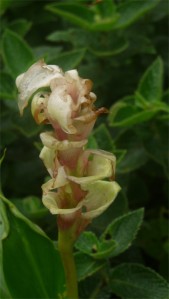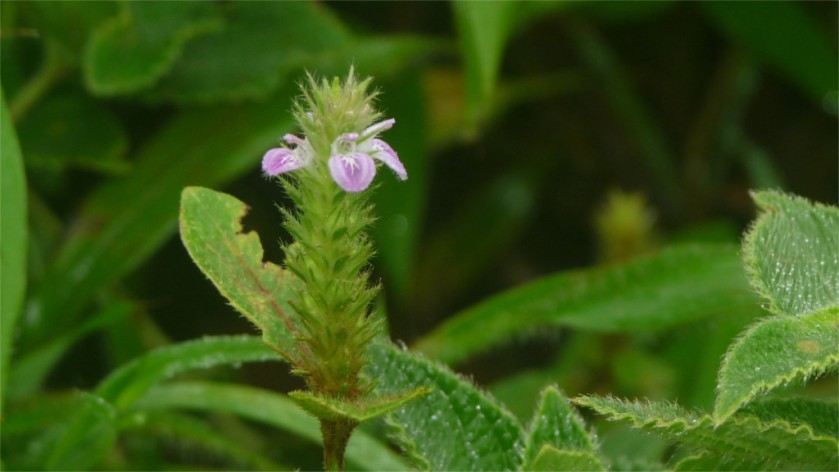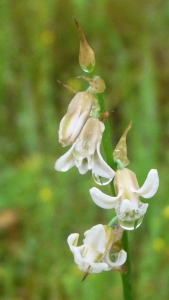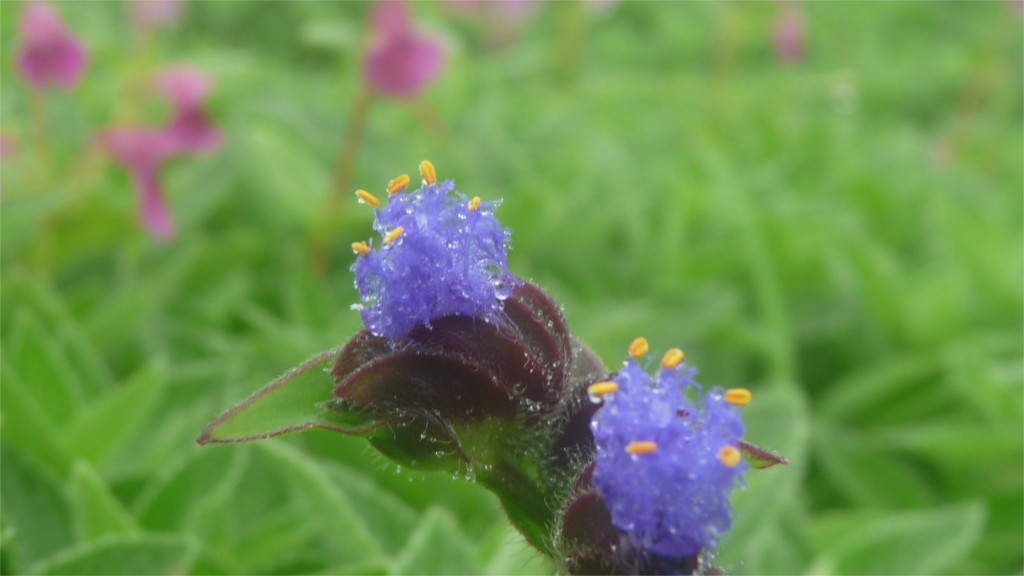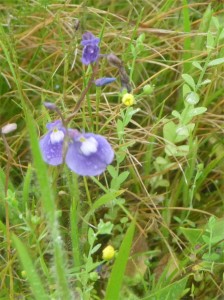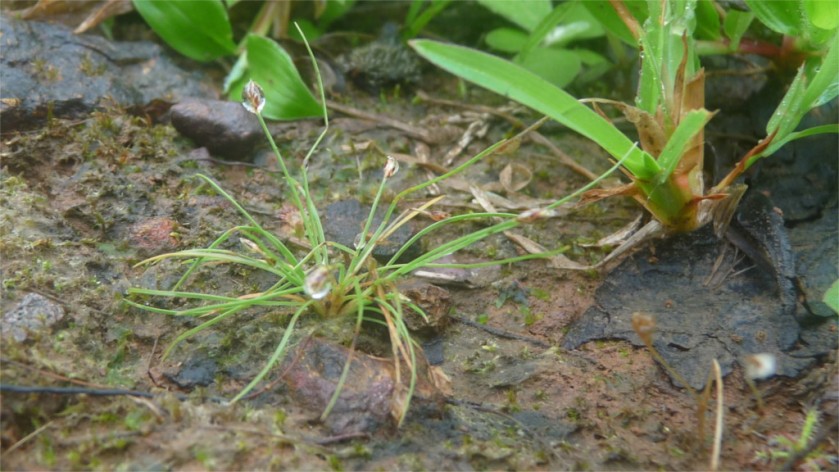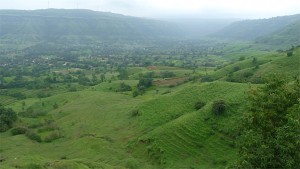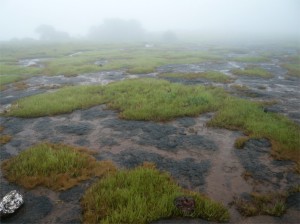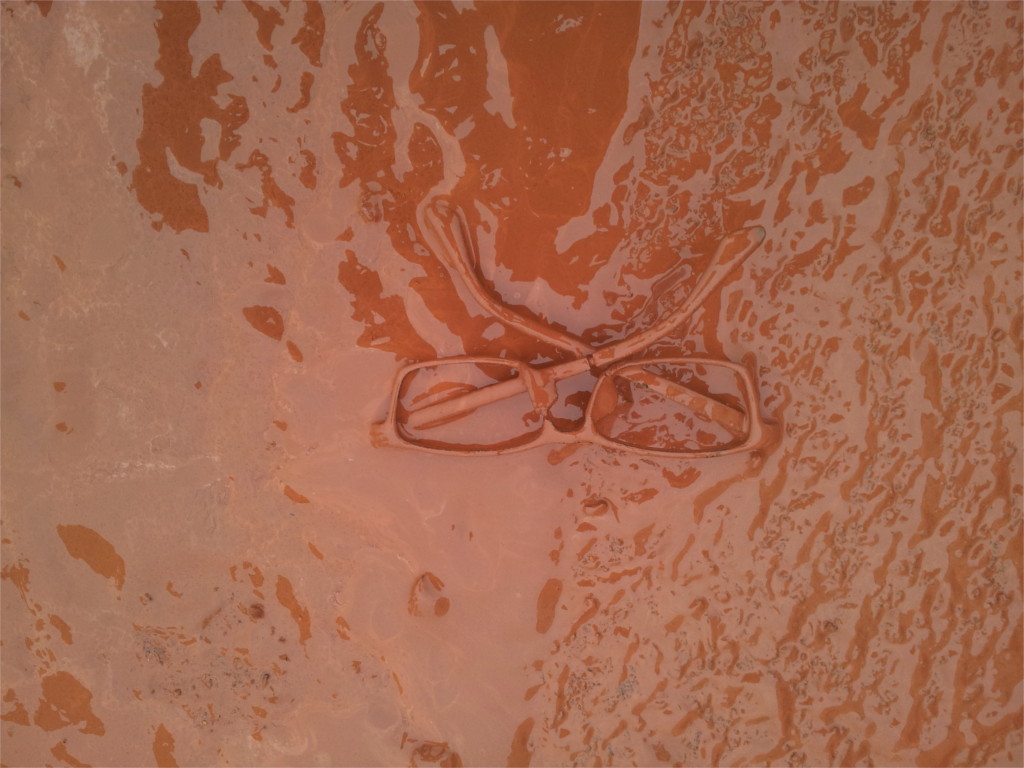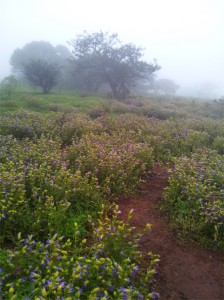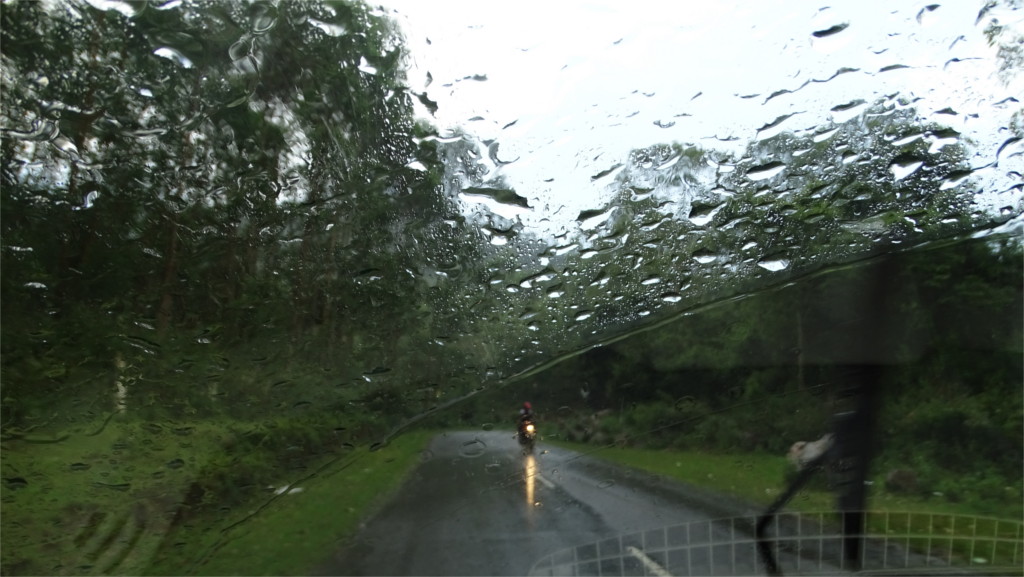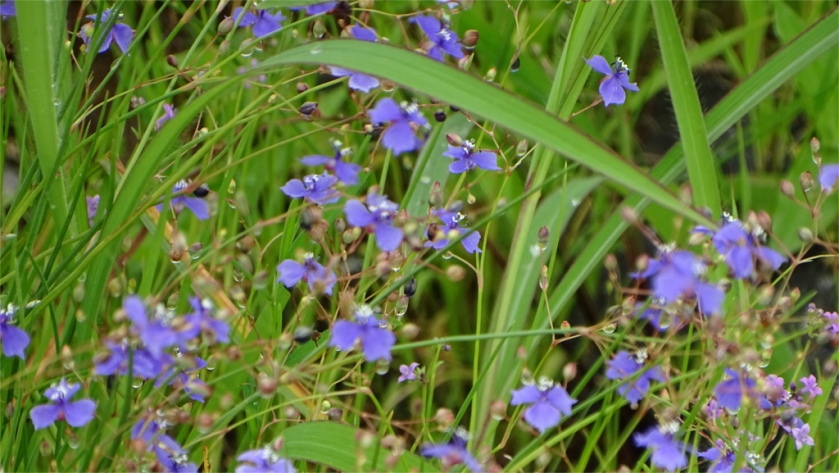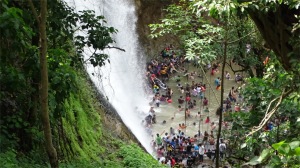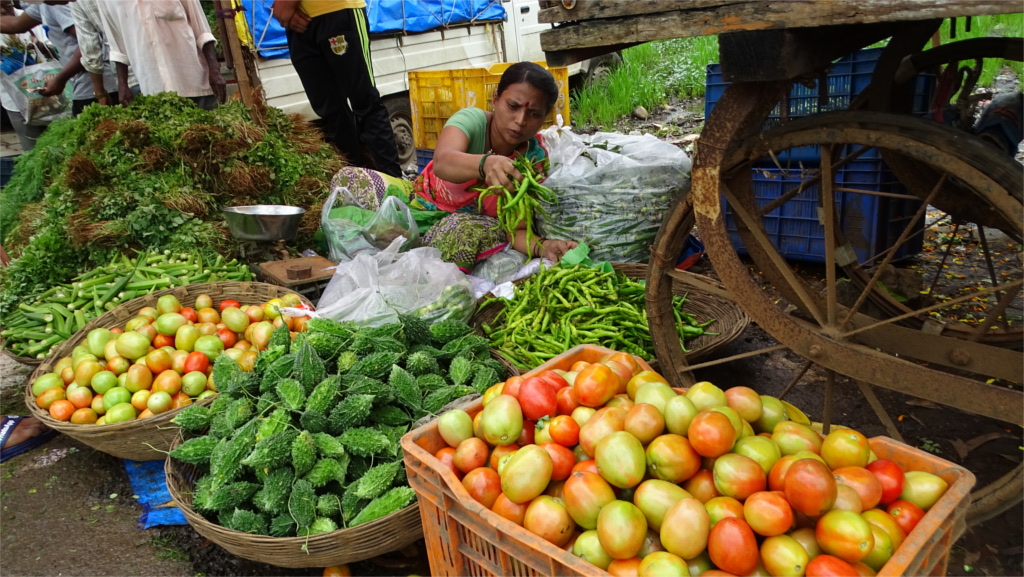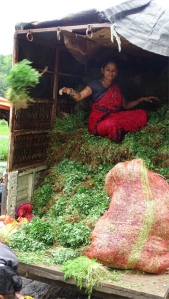On the verge of the parking lot just below Kaas plateau I came across a chest high growth of Chinese knotwood, whose flowers are featured above. On reading a bit, I learnt that this kind of branched bush is characteristic of knotwoods (family Polygonaceae). Information on this species is hard to find because its Latin double-barrelled name has changed many times; it is known as Polygonum praetermissum, P. auriculata, P. chinense, Persicaria chinensis among others. I could figure out that the round berries are edible. Interestingly, it turns out that of the sixty known species in this family, most are found in the Tibetan plateau, and have diversified only in the last ten million years. The home ground of P. chinensis seems to lie along the arc of the Himalayas, and continuing down to Thailand, Indonesia and Malayasia. It is an invasive species, and is probably poised to take over the Kaas plateau, just as it is taking over parts of the US.
The Indian arrowroot, which I spotted growing cheek-to-jowl with the Topli Karvi, is a much more sedate plant. A member of the Zingiberaceae (ginger) family, its name has recently changed from Hitchenia caulina to Curcuma caulina. Its Marathi name, chavar, seems to be well documented. Its tubers yield an edible starch. It grows mainly in high plateaus of the Western ghats, like Kaas, so it is vulnerable to a loss of habitat. Since it is economically important as well as endangered, there is an international effort on to cultivate it. I saw very few of these flowers, and came to the conclusion that it is not very common even in the Kaas plateau.
I kept seeing the spikes of the karambal every now and then, with a few small purple-pink petals growing out of the cylinder. I kept postponing a photo, hoping to get one covered with petals. Then when one of my companions told me that this is all I was likely to see, I stopped and took the photo which you can see above. A member of the Acanthaceae family, this ankle-high plant, Justicia procumbens, is given the rather fanciful English common name of water willow. Maybe the name is given because the leaves of the plant, like those of the willow, are ground into a paste used to treat asthma and coughs. This plant is widely reported in the Deccan plateau, found in Kumaon, known in Japan and Korea and used in Chinese medicine, but is vulnerable to habitat loss.
Plants cannot run away from attack; their defensive mechanism is chemistry. Because of this, they have developed a strange armoury of subtle chemicals over their long evolutionary history. That’s the reason why we keep finding in plants new and useful molecular weapons to combat diseases. It will be a pity if the fruits, so to say, of megayears of evolution disappear in the next couple of decades. The fence around the Kaas plateau, and the effort of growing plants in the Kew gardens are last-ditch measures.

